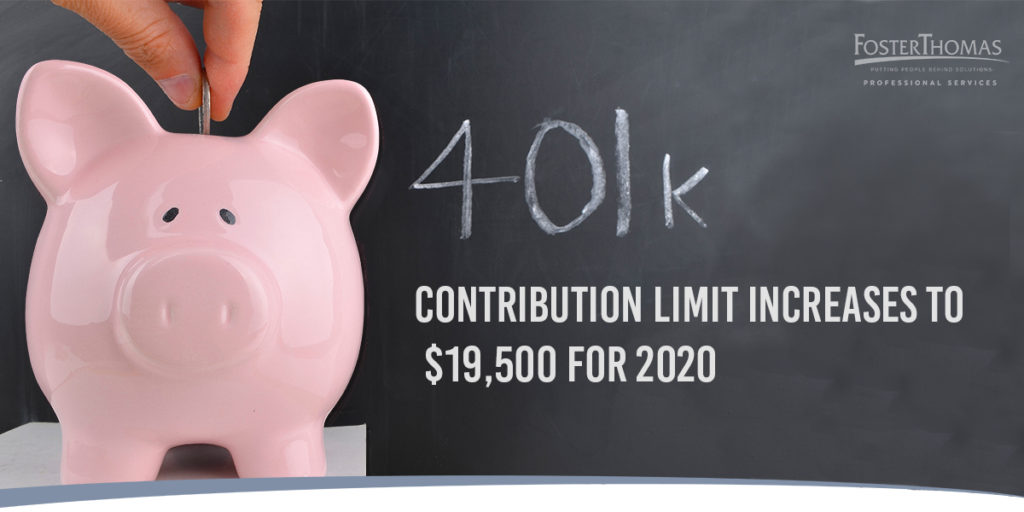
The IRS has announced the inflation-adjusted figures for retirement account savings and other cost-of-living changes in Notice 2019-59 effective January 1, 2020.
2020 Highlights
- 401(k), 403(b), most 457 plans and the federal government’s Thrift Savings Plan: limits increased by $500 from $19,000 in 2019 to $19,500 in 2020
- The catch-up contribution: limit for employees over 50 years old who participate in these plans also increased by $500, from $6,000 in 2019 to $6,500 in 2020
- The SIMPLE retirement account: limits increased by $500 from $13,000 in 2019 to $13,500 in 2020
- The income ranges for determining eligibility to make deductible contributions to traditional IRAs, to contribute to Roth IRAs and to claim the Saver’s Credit has also increased
2020 Phase-out Ranges
Taxpayers may deduct contributions to a traditional IRA if they meet certain criteria. If the taxpayer or their spouse was covered by a retirement plan at work in 2019, the deduction may be reduced, or phased-out, until it is eliminated, depending on filing status and income. (If neither the taxpayer nor the spouse is covered by a retirement plan at work, the phase-outs of the deduction do not apply.) Here are the phase-out ranges for 2020:
- Single taxpayers covered by a workplace retirement plan: phase-out range is $65,000 to $75,000
- Married couples filing jointly, where the spouse making the IRA contribution is covered by a workplace retirement plan: phase-out range is $104,000 to $124,000
- IRA contributor not covered by a workplace retirement plan and is married to someone who is covered: the deduction is phased out if the couple’s income is between $196,000 and $206,000
- A married individual filing a separate return who is covered by a workplace retirement plan: the phase-out range remains $0 to $10,000
